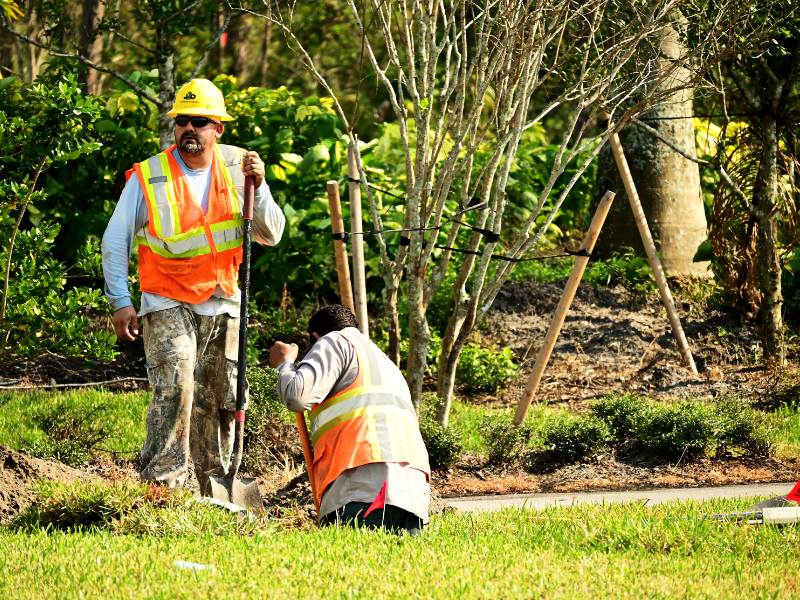Insurance is a critical aspect of running a business, particularly when it comes to protecting employees and assets. Among the various insurance documents that business owners need to be familiar with are the Workers’ Compensation Proof of Insurance Certificate and the Certificate of Insurance (COI). Though these documents may seem similar, they serve distinct purposes. Let’s explore the differences between the two and provide specific information about reading your workers’ compensation certificate, particularly in the context of PEOPayGo’s Employee Leasing program.
Workers' Compensation Proof of Insurance Certificate (POI)
Purpose: This certificate specifically verifies that an employer has obtained workers’ compensation insurance. Workers’ compensation insurance is mandatory in most states and provides coverage for employees who suffer work-related injuries or illnesses. It ensures that employees receive medical care, rehabilitation, and wage replacement benefits, and it protects employers from potential lawsuits related to workplace injuries.
Contents: A Workers’ Compensation Proof of Insurance Certificate typically includes:
– The name and address of the insured (employer).
– The policy number.
– The effective and expiration dates of the policy.
– The insurance carrier’s name and contact information.
– A statement confirming the coverage for workers’ compensation.
Use Case: Employers must often present this certificate to state regulatory agencies, contractors, or clients to demonstrate compliance with workers’ compensation laws. It is a way to prove that they have the necessary coverage to protect their employees.
Certificate of Insurance (COI)
Purpose: A Certificate of Insurance is a broader document that verifies the existence of various types of insurance coverage, such as general liability, property, automobile, and professional liability insurance. It provides a summary of the key details of an insurance policy but does not confer any rights to the certificate holder.
Contents: A COI typically includes:
– The name and address of the insured (policyholder).
– The policy numbers.
– The types of insurance coverage and their limits.
– The effective and expiration dates of each policy.
– The insurance carrier’s name and contact information.
– A description of the insured operations or locations.
– The name of the certificate holder.
Use Case: Businesses often provide a COI to clients, landlords, or vendors to prove that they have the necessary insurance coverage required for a contract or lease agreement. It reassures the certificate holder that the policyholder has sufficient coverage to handle potential risks associated with their operations.
Key Differences
1. Scope of Coverage:
– The Workers’ Compensation Proof of Insurance Certificate is specific to workers’ compensation insurance.
– A Certificate of Insurance can encompass various types of insurance coverage.
2. Purpose and Use:
– The Workers’ Compensation Proof of Insurance Certificate is used to demonstrate compliance with state workers’ compensation requirements.
– A Certificate of Insurance is used to provide evidence of insurance coverage to third parties for contractual or legal purposes.
3. Contents:
– The Workers’ Compensation Proof of Insurance Certificate focuses solely on workers’ compensation policy details.
– A Certificate of Insurance includes a broader range of insurance information, such as general liability, property, and automobile coverage.
4. Issuing Requirements:
– Workers’ Compensation Proof of Insurance Certificates are often required by state laws and regulations.
– Certificates of Insurance are generally requested by other businesses or entities as part of contractual agreements.
Reading Your Workers' Compensation Certificate with PEOPayGo
For businesses enrolled in PEOPayGo’s Employee Leasing program, understanding your workers’ compensation certificate is crucial. Here are some specific pointers to help you navigate the document:
Where can I find my company name?
- Your company’s name and effective coverage date is referenced in the Description of Operations Box at the bottom of the certificate.
Why is my company name not in the insured box?
- PEOPayGo is listed as the employer of record for tax and insurance purposes.
Why is PEOPayGo the employer of record?
- Your program is an “Employee Leasing” program (Per Florida Statute 468.520(4)), which is an arrangement whereby a leasing company assigns its employees back to the client and is covered under the PEOPayGo’s insurance policy.
Who is covered under this workers’ compensation certificate?
- As stated in the Description of Operations Box, coverage is only provided for leased employees but not subcontractors, independent contractors, or any other person not enrolled in the PEOPayGo program policy.
Conclusion
Both the Workers’ Compensation Proof of Insurance Certificate and the Certificate of Insurance are vital documents in the business world, each serving distinct but equally important purposes. Understanding the differences between them helps ensure that your business remains compliant with legal requirements and meets the expectations of clients, partners, and regulatory bodies. Additionally, for businesses utilizing PEOPayGo’s Employee Leasing program, knowing how to read your workers’ compensation certificate ensures clarity on coverage and compliance. By maintaining accurate and up-to-date insurance documentation, you can safeguard your business and provide peace of mind to all stakeholders involved.




